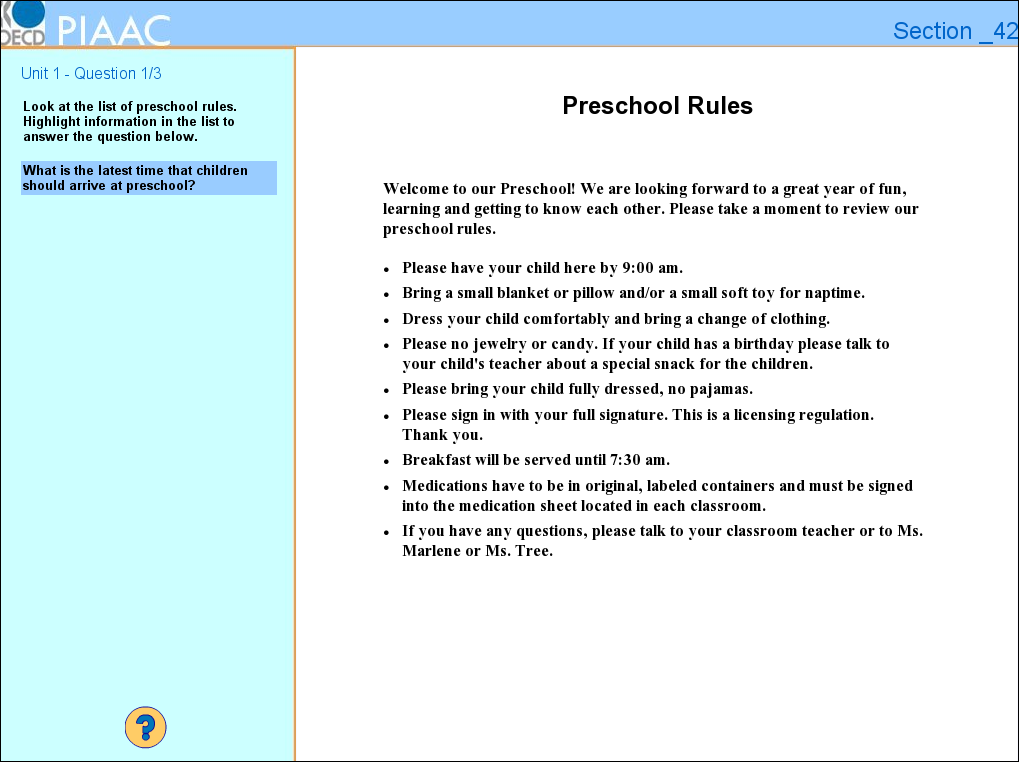PIAAC R2 and R3
Continuation of the international computer based assessment for the investigation of everyday competencies of adults (Programme for the International Assessment of Adult Competencies, Round 2 and Round 3)
In 2012 the main test of the first PIAAC study (PIAAC R1) took place in 25 countries. Now the competencies (reading, math and problem solving) of adults at the age of 16 till 65 are to be tested computer based in further countries. Therefore, PIAAC is being continued in two further ruunds (R2 and R3) in the following countries.
PIAAC R2: Chile, Greek, Indonesia, Israel, Lithuania, New Zeeland, Singapore, Slovenia and Turkey
PIAAC R3: Ecuador, Kazakhstan, Mexico, Peru and Hungary
Objectives
TBA supports the international consortium of the PIAAC study with the technical implementation of the computer based tasks. Moreover, TBA aims at guaranteeing a smooth technical flow and providing all needed practical and technical advice.
In general, PIAAC targets at measuring competencies in the field of reading, math and problem solving. Moreover, via computerized questionnaires personal data of the test takers are collected.
The two main goals for PIAAC R2 and R3 are presented in more detail below:
1. Measuring Competencies
Three kinds of skills are investigated with the help of appropriate item formats in PIAAC:
- Reading competency: In these items the test takers answer questions concerning a read text, for instance, a package insert or web pages.
This is how an item of reading competency could look like:

- Every day math competency: Test takers are supposed to interpret e.g. scales or diagrams as well as to rate linear dimensions or sizes.
- Problem solving competencies within new media: Concerning the items of problem solving, for instance, web pages or email programs have been re-built so the test takes can e.g. reserve tickets via an online form, send or sort emails.
This is how an item of problem solving competency could look like:

2. Collecting Background Information
Information about the test takers is collected with a background questionnaire. This background information tells about the age, the training or the employment. Of course, the data are collected highly confidential and anonymously, any conclusions to single persons cannot be drawn.
Technical Implementation
TBA, along with the Luxembourg Institute of Science and Technology (LIST), provides the computer based testing platform under the direction of the American test provider ETS (Educational Testing Service). Therefore, TBA is responsible for the creation and the provision of delivery systems in the form of virtual machines (VM). These VMs are virtual operating systems, or in other words, a ‘computer inside a computer’.
Likewise to PIAAC R1 every participating country receives its own VM. In these VMs the single components of the test (background questionnaire, overview of test cases, tasks and the defined test procedure) are contained in the particular national language. The actual test (the tasks, that cope the before mentioned fields of competencies) consists of the computer based testing items developed for round 1.
Moreover, TBA takes charge of embedding and access of the VM in the executing computer. With the help of so-called script commands, for instance, data from the VM can be transferred to the computer.In addition, the Open Language Tool (OLT) was adapted and further developed for Round 2 and Round 3.
In the context of service tasks, also provided by TBA, a ticket system is taken care of, to maintain, along with ETS, international support in case of technical problems of the participating countries.
Finance: OECD
Duration: PIAAC R2: March 2012 - May 2016, PIAAC R3: September 2014 - December 2019
Status: PIAAC R2: completed; PIAAC R3: completed
Project Management: Frank Goldhammer
Contact/Coordination: Robert Baumann, Roland Johannes
Further links: PIAAC R1